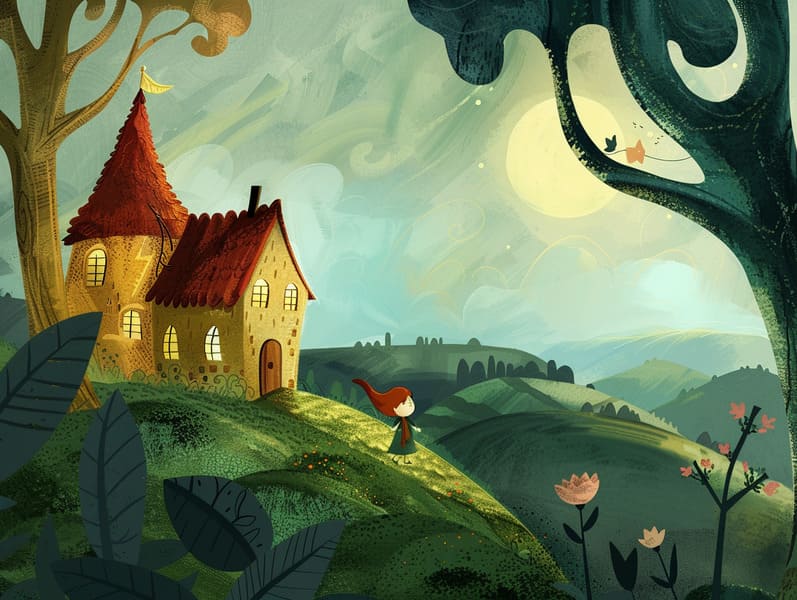
Nighttime is a important time for adults and their kids. It’s a opportunity to wind down, huddle together, and revel in the beauty of sleepy-time tales.
For ages, bedtime stories for kids have been a esteemed ritual, offering more than just a way to fall asleep. They provide an means for closeness, education, and encouraging imagination.
Bedtime Stories: Their Importance
Evening stories for little ones are more than just a way to conclude the day. They play a significant role in a child’s development and in fortifying the adult-child link. Here’s why they matter:
1. Together Time: Reading together at bedtime fosters a special bonding moment between kids and their parents. It’s a moment of proximity that helps children feel secure and protected.
2. Language Development: Hearing tales helps children develop their linguistic abilities. They understand new words, understand construction, and improve their hearing and comprehension abilities.
3. Inventiveness: Narratives for little ones move them to imaginary worlds, promoting vision. They visualize characters, settings, and adventures, which powers their innovation.
4. Emotional Growth: Nighttime tales often include characters facing difficulties and reactions. These tales help kids understand and process their own emotions, building emotional skills.
5. Mental Development: Absorbing a narrative helps children develop mental engagement, remembering, and logical thinking. They learn to follow stories, remember facts, and project conclusions.
Incorporating Stories into Bedtime
Establishing a bedtime habit that has reading narratives is straightforward and worthwhile. Here’s how to ensure it becomes a prized part of your end-of-day ritual:
1. Choose a Comfortable Spot: Select a cozy place where you and your child can cuddle without disturbances. A comfortable bed or a comfortable reading nook works ideally.
2. Set a Regular Time: Choose a consistent time each night for tales. Consistency helps children be accustomed and makes the practice simpler to continue.
3. Pick Stories for Their Age: Opt for tales that suit your child’s understanding. Small children might be engaged by books with pictures with basic stories, while grown children may prefer books with chapters with more involved stories.
4. Bring the Story to Life: Make sure the tale be captivating by adding different voices and accents, adding effect sounds, and asking your child to join in. Ask things about the story to maintain their interest.
5. Create a Calm Atmosphere: Adjust the lights, use soft voices, and create a relaxing environment to help your child ease into read more rest.
Where to Locate Bedtime Stories
There are numerous options where you can find excellent bedtime stories for children. Here are some suggestions to think about:
1. Children’s Literature: Explore your nearby library or bookstore to find a diverse selection of bedtime stories for kids. Perusing the options together can be a fun activity that also permits children to choose stories that interest them.
2. Internet Sources: There are many internet sites that offer free bedtime stories. Sites like free story websites provide a variety of short stories for kids that you can read online. These sites are great for finding new and unique stories without charges.
3. Audio Books and Story Apps: For nights when you’re too weary to read, look into audiobooks or storytelling apps. These can provide a relaxing voice to read your child a story, ensuring they still get their bedtime story fix. Apps often offer interactive elements that can hold their focus further.
4. Individualized Stories: Craft your own stories reflecting your child’s likes. Personalized stories can be incredibly engaging and meaningful. You can get your child in the writing process, making them a part of the adventure.
Shorter Story Benefits
Compact tales for little ones are highly advantageous for bedtime. They provide all the advantages of longer stories but are more brief, making them perfect for getting ready for bed before sleep. Here’s why short stories are a perfect choice:
1. Straightforward: Compact stories are uncomplicated and understandable for kids, even after a long day. They can promptly grasp the plot and enjoy the story without losing focus.
2. Quick Engagement: Quick narratives readily engage children, keeping their interest and imagination. This makes them great for keeping bedtime customs manageable yet enjoyable.
3. Diverse Options: Quick stories create for variety in your bedtime storytime. You can opt for a different story each night, keeping the custom new and exciting for your child.
4. Manages Time Well: For busy parents, short stories are a fast way to make sure children still get their nightly dose of storytelling. They fit well into a packed schedule while still offering the full positives of a bedtime story.
The Satisfaction of "Read Me a Story"
The simple phrase, “Will you read me a story?” can open a world of magic for children. Agreeing to this request not only fulfills a child’s requirement for attention and engagement but also develops lasting times. Here’s why it’s charming:
1. Bond: Narrating to your child creates a deep emotional link. It’s a time for affection, sharing, and bonding.
2. Heritage: Building a bedtime story practice creates a valued tradition that children are excited for every night. It’s a practice that can be passed down through generations.
3. Shared Learning: As you tell tales, you’ll watch your child’s growth and learning. Their queries, reactions, and understanding of the stories progress, offering insights into their developing minds.
4. Safe Environment: Bedtime stories provide a safe space for children to understand emotions, face fears, and find comfort in the safe presence of a parent.
End Thoughts
Nightly tales for children are a powerful tool for nurturing a child’s growth and forming unforgettable times of connection.
Comments on “Exploring the Beauty of Nightfall Stories: Developing Valued Moments with Kids”